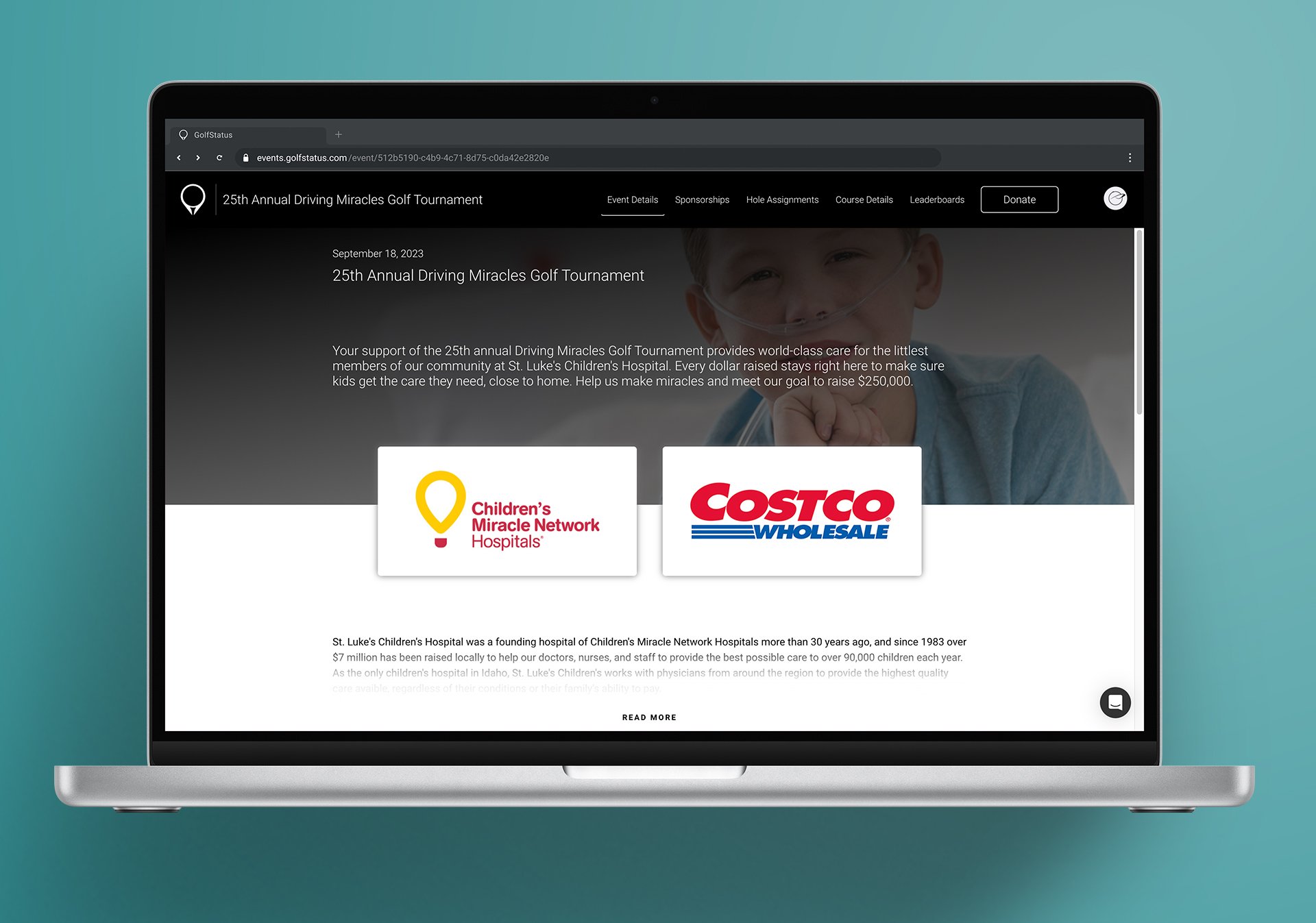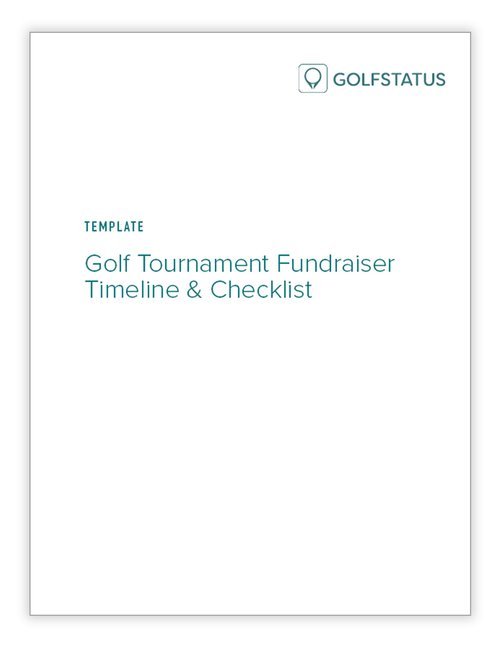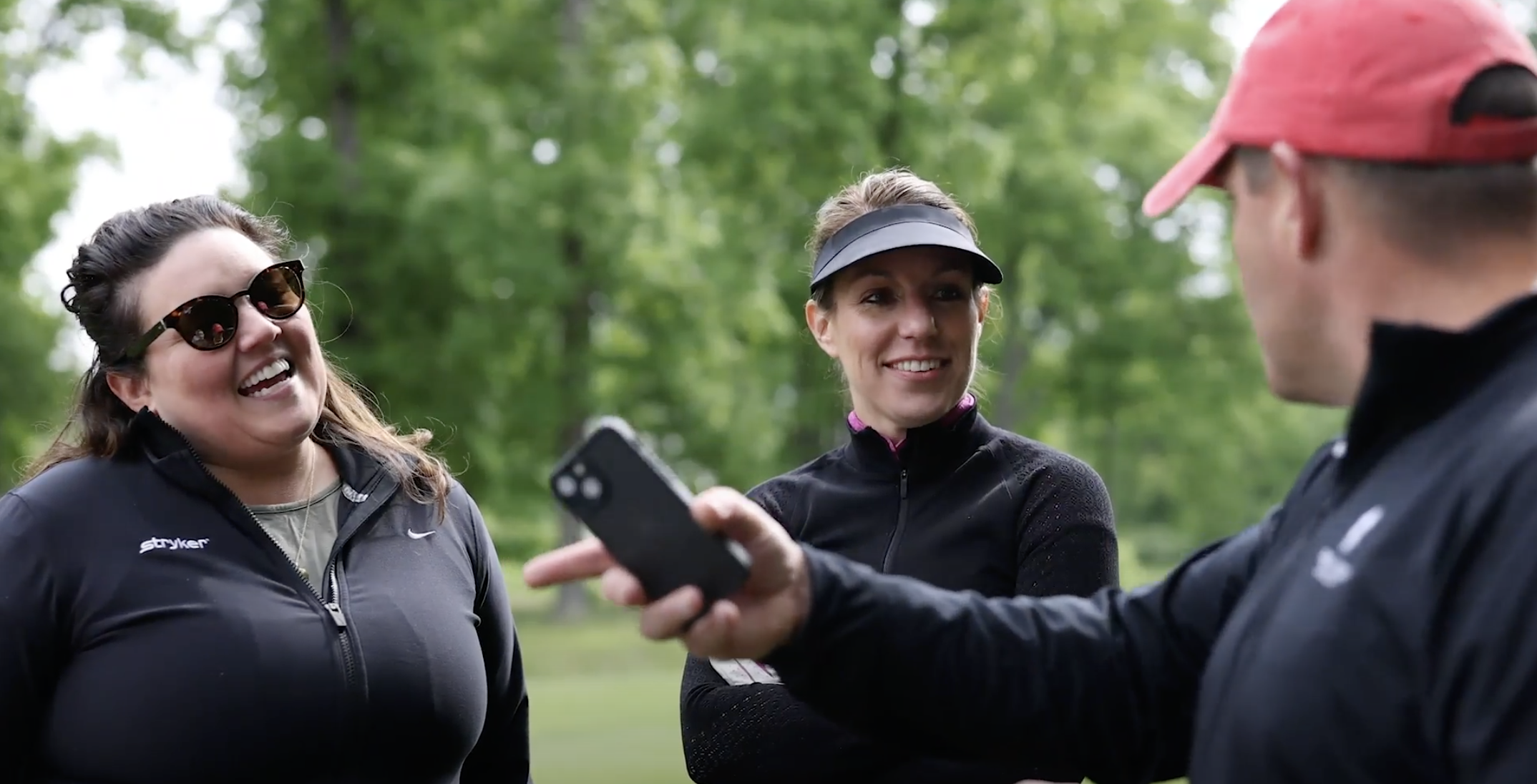by Jen Wemhoff, Communications Manager at GolfStatus
Golf tournaments remain one of the most powerful tools for third parties—like corporate partners, passionate supporters, and volunteers—to raise money for nonprofits and causes they care about. Golf’s continued popularity and its capacity as a fundraising tool make it an ideal fit for folks who are passionate about golf and a good cause.
Golf is a great way to mobilize passionate supporters or corporate partners to raise money for your nonprofit.
More than most fundraising events, charity golf tournaments offer unique advantages for the benefiting nonprofit and the organizer. For nonprofits, these events create a passive income stream that doesn’t require significant internal bandwidth like a dedicated staff member or line item in the budget. What’s more, they also build awareness and expand visibility for your mission and programs. For event organizers, particularly companies and corporate entities, there’s a major brand lift from supporting a good cause and high engagement with a typically affluent and influential demographic.
By empowering third parties to run golf tournaments on your behalf and equipping them with the right tools, you can grow your nonprofit’s impact with minimal lift. Here’s how:
1. Start with your network
Your best bet is to start with what you already have: past event participants, sponsors, volunteers, donors, and board members. If your nonprofit has hosted golf tournaments before, revisit those participant lists. Consider sending a dedicated campaign inviting those who supported your organization through golf in the past to organize a tournament that benefits your organization. The campaign could include email, direct mail, individual phone calls, a survey, or a mix based on your team’s capacity. You might also:
Use social media to ask your audience who plays golf or who simply likes organizing events.
Include a call to action in year-end giving appeals to get in touch if they’re interested in event planning or golf.
Create a dedicated page on your organization’s website that outlines how supporters can host a golf tournament to benefit your cause.
Do some pre-planning before you start your outreach so you have some pieces and resources already in place to provide to people who are interested. Beyond just making the process easy (see #2 below), you want to set these third-party tournaments up for success, so make sure you’re prepared to be a partner in the process.
Pro Tip:
GolfStatus’s online resource library is packed with free guides, templates, checklists, and other downloadable tournament planning tools. Share these with current and potential event organizers to help get them started.
2. Make It Easy for organizers
Even the most passionate supporters will appreciate tools that make planning a golf tournament easier. That’s where golf event-specific technology comes in. The right platform streamlines planning, automates administrative tasks, and includes built-in fundraising features, making it easier for anyone to launch, run, and repeat their tournament year after year.
Your event management platform should be able to function as the “bank” for your golf tournament, facilitating how you collect, hold, and disburse the funds raised from your event. When some registers a team, becomes a sponsor, makes a donation, or purchases an add-on, those funds should be securely processed and held in escrow until after the event. Once it concludes, those funds can be distributed directly to your organization, so both your nonprofit and the event organizer have peace of mind and clear financial accountability.
You might also consider providing the organizer with a media kit full of logos, brand guidelines, and key messaging to help your brand stay consistent. When it’s easy, it’s more fun, more rewarding, and more likely that they’ll keep the effort going.
PRO
TIP:
Say thank you whenever and wherever you can to these third-party organizers. Public shoutouts on social media, in newsletters or blogs, or on your organization’s website are powerful, but a personal touch will go a long way in expressing your gratitude. Send a handwritten note and follow it up with a phone call.
3. Standardize with golf-specific technology
Fundraising or event management platforms aren’t one-size-fits-all. Golf tournaments have unique needs that require specialized tools to manage effectively. Look for a platform that offers an attractive event website with online registration (which saves organizers a ton of time and effort), plus easy access for all members of the planning team and the golf facility to work together and keep everything organized in one place.
It should be built just for golf events, with features to handle everything from hole assignments and live scoring to digital sponsor exposure and pre-formatted scorecards and cart signs. A dedicated landing page listing all events that benefit your organization makes it easy for folks in your network to find and support them.
PRO
TIP:
Standardizing tech across all third-party golf fundraisers means your donor data is uniformly collected (see #4 below) and reported for easy integration into your CRM for additional donor stewardship.
4. Capture & Manage Data
Donor and participant data are essential, especially when a third party is planning and managing the event. You can’t use the information you don’t have! Seamlessly collecting this information during the registration process is crucial to understanding who is supporting your organization through golf. This way, both organizers and your team can access robust reporting tools to see who’s playing in, donating to, and sponsoring golf events tied to your nonprofit.
This valuable data helps your nonprofit build stronger relationships, grow donor pipelines, and make data-driven decisions that maximize future fundraising efforts. Using golf event management technology makes collecting and managing this data simple and efficient.
PRO
TIP:
Use this donor and participant data to segment follow-ups and personalize donor stewardship efforts. Add tags, source codes, or other identifiers to your CRM to track who came through third-party golf events.
built for golf, built for good
GolfStatus is the industry leader in event management tech built specifically for charity golf tournaments. Nonprofits can easily activate third parties to run successful, lucrative, and data-rich golf fundraisers without having to oversee every detail. Through our Golf for Good program, 501(c) organizations and those hosting tournaments to benefit them are eligible for no-cost access to the platform.
From acting as the “bank” to holding funds until post-event disbursement, to providing dedicated support, customizable websites, and donor data capture, GolfStatus makes it easy for supporters to turn a round of golf into real impact.




















































